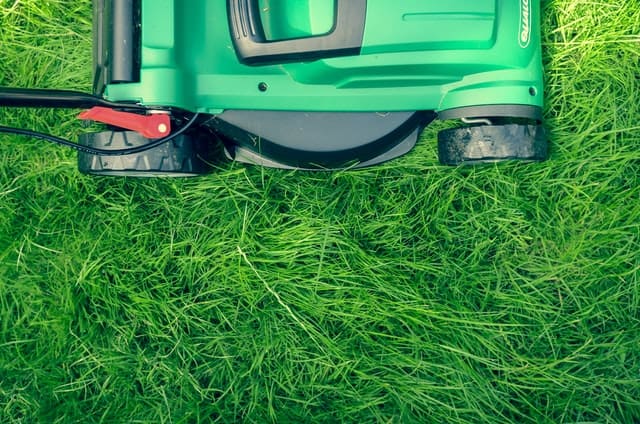As fall rolls in and tumbling leaves fill your yard with dried leaves, you’re in for a tad of yard work. Autumn is the season where raking and ground cleanup is the most common task but mowing your lawn completely changes its rate of growth in this season. Depending on whether you have cool or warm-season turf, mowing your lawn will either get more frequent or stop altogether. Knowing what type of grass you have and learning when to stop mowing lawns is essential in keeping your turf pristine.
Types of Grass
We may not know it but there are different types of grass that grow in different seasons and the maintenance required for each is completely different from each other.
Warm-season turf
These types of grasses grow well in warmer temperatures. They usually speed up growth in summer hence making you mow your grass more frequently under the intense heat of the sun. They prefer growing in warmer climates, especially in the tropical zone.
They thrive well in warmer temperatures exceeding 90 degrees and when they hit lower temperatures, these types of grasses either halt in growth or turn dry and prickly.
Cool-season turf
These types of grass grow faster in spring and autumn when the temperature is much cooler. Most of these grass types have low heat tolerance where they slow down in growth and turn brown when temperatures exceed 90 degrees. However, they stop growing altogether when temperatures get 32 degrees or colder.
Cool grass types prefer growing in northern regions like countries in Canada and the northern American states where the weather is much colder in most parts of the year.
Why does grass grow fast?
Grass grows well in the proper environment and if they have abundant sunlight, water, and the proper temperature in which they grow, the grass flourishes faster and healthier. This requires you to mow your property more frequently.
Does grass stop growing?
Grass doesn’t grow throughout the year. In fact, it has a hibernation period where it stops growing for a period of time. For warm-season grass, they tend to stop growing around late October to early November. However, this is the opposite case for cold-season turf.
Cold season grasses thrive when the weather starts to hit the colder seasons. They thrive well when the weather starts to hit 50 degrees at around late September.
When to stop mowing the lawn?
You stop mowing your lawn once your grass starts to hibernate. This usually happens during winter for all types of grass. However, for warm-season grass, you would have to store your mower earlier in mid-autumn. Cold season turf, in contrast, would still require you to mow your property until the air temperature hits 40 degrees. There are other telltale signs that let you know when it’s already time for you to stop mowing your grass.
Falling Leaves
Leaves start to fall when the weather is already getting cold. When trees are 50% bare, your warm-season turf already starts to hit its dormancy. At this period, you should start putting your zero turn mower away for hibernation.
Soil Temperature
The temperature of the soil and the air is different. Even when the air thins out due to the cold, your soil hits a colder temperature much later. Usually, warm-season grasses stop growing when the soil is between 45 to 50 degrees. Cold season grasses stop growing when the soil temperature reaches 60 degrees.
Frost
When the frost hits your grass, this is a clear indication for you to stop mowing your turf. However, cold-season grass types still thrive even when there is frost forming on your property due to warmer soil temperature. If your cool temperature grass still keeps on getting taller despite the frost, mow only when the grass gets taller than 4 inches. If not, it’s best to keep your grass as it is.
Snow
Both cold and warm-season kinds of grass become dormant in winter. Snow is a clear sign that both the air and soil temperature is already below 32 degrees thus requiring you to store your mower until springs start to bloom.
How short should I cut grass for winter?
The sweet spot for winter grass height is about 2 to 2 ½ inches. This prevents snow mold and other fungal diseases from destroying your grass. Keeping the ideal grass height before your grass starts to hibernate is required especially if you have cool-season turf since it is harder to know when they are going to stop growing.
When to start mowing lawn?

Once spring comes in, the grass starts to grow. However, you don’t have to wait for it to grow taller for you to mow it. To promote better grass growth, you start grass shearing to cut off the tips of your grass blades. It’s safe to cut off half an inch of your grass.
How long should I wait for the grass to grow before mowing my lawn?
Once the snow starts to melt give your grass two weeks to regain its strength and start regrowing. Cutting as soon as the snow has completely melted will result in a catastrophe. You will end up with:
- Patching or bare spots around your lawn
- Stunted grass
- Rotting or plant diseases
Remember that your grass has gone into a dormant state during winter. Like any animal waking up from their long slumber, they need to refeed and gain their strength back. This is the same case for your grass. It needs to extend its roots to regrow.
